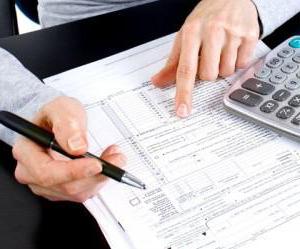41 an accounting account is an article that summarizes information on values acquired as products for sale. It is used mainly by trade and catering enterprises. Let us further consider in detail the account 41 "Products". 
general characteristics
In enterprises c. 41 are used in cases where materials, products, products are bought exclusively for subsequent sale, or when the price of finished goods purchased for packaging is not included in the cost of the sold objects, but must be reimbursed by customers separately. Trade organizations reflect under this article also containers purchased from other persons and made independently. In the latter case, the exception is inventory packaging for household or industrial needs.
Chart of accounts
To sc 41 additional articles may be created. They can be:
- Score 41.1. It reflects the presence and movement of stocks that are located at distribution and wholesale bases, in pantries, in warehouses of enterprises providing catering services, in vegetable stores, in refrigerators, etc.
- Account 41.2 summarizes information about the products of organizations that are engaged in retail trade. These, in particular, include stalls, shops, stalls, tents and so on. It also reflects the presence and movement of glass containers (cans, bottles, etc.) at retail outlets, in buffets of catering organizations.
- Account 41.3 reflects data on the presence and movement of containers under products and empty packaging. Information about glassware at retail and catering facilities is not recorded.
- Account 41.4 is used to summarize information about purchased products by enterprises engaged in the industrial or manufacturing sector.

Posting
Upon receipt of products and containers at the warehouse, account 41 is debited. In the accounting, postings during posting are made using account. 60, reflecting settlement transactions with contractors and suppliers. The chart of accounts provides that the company engaged in retail sales and reflecting products at the selling price, together with the specified record, makes one more. It involves the debit of the article in question and the credit of the account. 42 for the difference between the purchase and sale price. Transport and other costs of delivery and procurement of products are transferred from Cd mid. 60 in dec. 44. Product receipts may also be recorded using invoice. 15, and without it. In the latter case, a procedure similar to that established to reflect operations with materials is applied.
How to write off 41 accounts?
When revenue from sales is recognized, the cost of the products is transferred to DB cf. 90. If the profit from the sale of shipped (released) goods in a certain period cannot be recognized, up to this point they are recorded on the account. 45. It reflects information on shipped products. In the event of their actual shipment (vacation), a record is recorded on Cd. 41 in correspondence with sc. 45. An enterprise may transfer products for processing to other companies. In this case, they are not written off. Information on such products is shown separately. Analytical records are kept for responsible persons, parties, grades, names, and, if necessary, for places of storage of products. 
Specificity
As experienced professionals note, 41 accounting accounts are historically the first reporting item. In connection with its continued existence, its purpose has become multifunctional. First of all, 41 accounts are an inventory item. When reflecting product information at the sale or purchase price, this function is fully implemented.The article in question also performs a costing task.
This function is implemented when the availability and movement of products is reflected at cost, since the price of the product rises by the corresponding costs (transportation, shortages against losses on the way, interest on the loan, etc.). In addition, 41 accounting accounts are financially productive. For many years, products have been valued at acquisition cost at debit, and at market value at credit. The balance should reflect a loss or profit. But this result was distorted, because there were leftovers. According to 41 accounts, products are currently recorded at acquisition cost, which, in turn, ensures the return of the financially-effective function of the article in question. 
Explanation
When considering account 41, it is important to clearly define what the goods are. In practice, 2 basic definitions are derived. According to paragraph 2 of PBU 5/01, goods are recognized as part of the inventories received or acquired from other citizens or organizations for subsequent sale. From this formulation it follows that the objects under consideration are intended for implementation. For example, if a car is purchased to transport products, materials, etc., then it will act as a fixed asset. If the vehicle is bought for sale, then it is a commodity. Another definition is given in Art. 38 Tax Code. Paragraph three indicates that such property includes any property that is sold or intended for sale. This wording is used for tax purposes. The content of this definition is clearly wider than the interpretation given in the PBU. This is due to the fact that property is indicated here that reflects 01, 10, 04, 03, 41, and 43 accounting accounts.
Tax reduction
The definition of an enterprise given in the Tax Code may in some cases be used to minimize tax deductions. For example, a 10% VAT rate is used when selling certain types of food products. Their list is given in Art. 164 Tax Code (Clause 2). These include, but are not limited to, bakery products and bread. In order to apply the indicated rate, it is necessary that the object acts as a product. Many organizations not only produce, but also sell various pies, rolls, etc., related to bakery products. By the definition given in the PBU, they do not act as goods. And in accordance with the interpretation of the Tax Code - they act. This means that the company during the sale can charge a rate of 10% VAT (and not 20). 
Reflection on sale value
According to the requirements of PBU 5/01, such accounting price options are allowed as:
- Purchase price (incomplete or full).
- Selling price.
The second option can be used exclusively by retailers. The selling price may consist of the full or incomplete purchase price with a mark-up. The advantages of this option are as follows:
- You can determine the selling price for any date.
- It is easy to establish the cost of goods sold, which are subject to exclusion from the account. 41 (usually according to the testimony of KKM).
Among the shortcomings, experts note the need:
- To carry out additional work to bring the assessment to the selling price.
- Use cf. 42.
- Reflect revaluation.
- Make a special calculation to determine gross profit.

Nevertheless, despite obvious disadvantages, this option is used by most stores. First of all, this is considered a tribute to tradition - in the Soviet period, goods, except those in vegetable storages, were fixed at a retail price. The second reason is that the cash register receipt acts as the only document fixing the fact of purchase in the store. Revenue at KKM is reflected in the total amount and is presented in the form of the value of the goods at the selling price.








